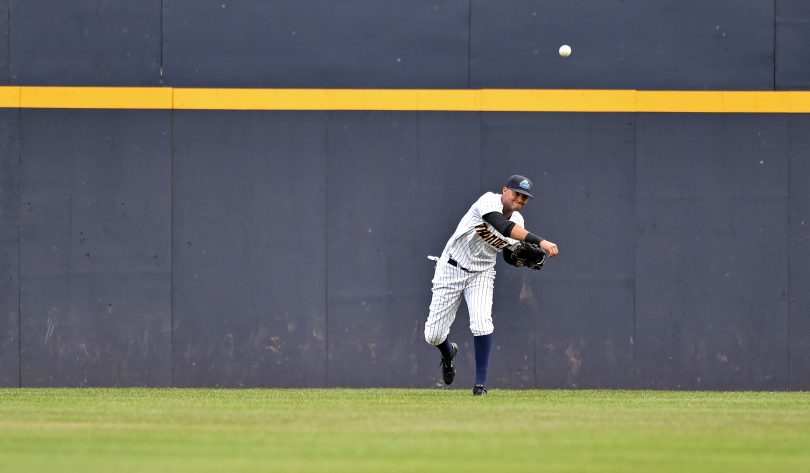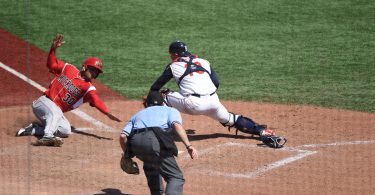The Situation: There are runners on 2nd and 3rd with two outs in the top of the 9th. The defense clings to a 1-run lead in what has been an intense game. The left-handed hitting 2-hole batter is up and has leveraged himself into a 2-0 count. There are good wheels on the bases and in the batters box. The 3-hitter in the on deck circle and has been swinging a hot stick. There is a right-on-right pitcher versus hitter match-up, but there is no easy way out of this jam.
The Play: The pitcher gets the sign from the catcher, a change-up designed to be below the strike zone. He comes set and delivers. The change-up is up and over the plate and doesn’t fool the hitter. He hits the ball on the screws and delivers a hot shot into right field. The right fielder gathers the ball as the runner from second is about to touch third base. The third base coach has moved far down the line and is either sending the runner or holding him up late after an aggressive turn. The third base coach usually uses third base as a marker for whether to send or hold when the right field has a good arm, as in this situation.
As the third base coach waves the runner around, he watches the outfielder. As the outfielder collects the ball, he takes a big long crow hop. It’s a split second decision, but the 3rd base coach feels like the few extra steps the runner has gained during the slow exchange will be enough. He continues to wave him home, watching the plate intently.
The Outcome: The right fielder uncorks a strong throw that’s online. The throw sails past the first baseman in the cut position, but is just a hair late. The runner slides in and the offense takes the lead. Adding insult to the blown lead is the runner moving up to 2nd on the throw.
What Went Wrong:
These are the plays that baseball players live for, the “do or die” moment! What we want to look at is the time it took the right fielder to get rid of the ball, a difference maker in this decision for the third base coach to send the runner and the outcome of the play at the plate. Good third base coaches will know the arm strength of the outfielders ahead of the game, and will often use the timing of where the runner is/will be in relation to third base when the outfielder is going to release the ball to guide their decision to send or hold a runner. Your job as an outfielder is to make this decision as difficult as possible. Let’s get into the details:
For starters, the term ‘crow hop’ is an outdated term, because when an outfielder is making the exchange and readying himself to throw, he doesn’t want to waste time by hopping up in the air. Instead, outfielders should get their momentum going in the direction of the throw by gaining ground with quick powerful steps and keeping feet close to the ground (it’s hard to throw with your feet in the air!). This will eliminate valuable time wasted with a long, slow crow hop like the right fielder made in this scenario.
The difference in time saved delivering the ball to a base or cutoff man with a throw at 100% (say 89 MPH) compared to a throw at 92% (82 MPH), is not worth it if it takes additional time to create that force in the exchange. In other words, you cut down more time by quickening your exchange than you do by throwing the ball 100% with a big slow exchange. Especially in a close call for the 3rd base coach who often cannot judge strength of the throw before deciding to send a runner, it’s important to get the ball in the air quickly with a quick and efficient exchange. More times than not, getting the ball in the air before the runner passes third base will result in the runner being held up.
KPB suggests practicing your quick exchange and pro-step footwork in your throwing routine. For information on how to do this, check out our article on improving your outfield catch routine. We also suggest checking out JT Maguire on Twitter and take advantage of the Cleveland Indians outfield player development coach, which is jam packed with great outfield information and videos on the pro-step and much more.







